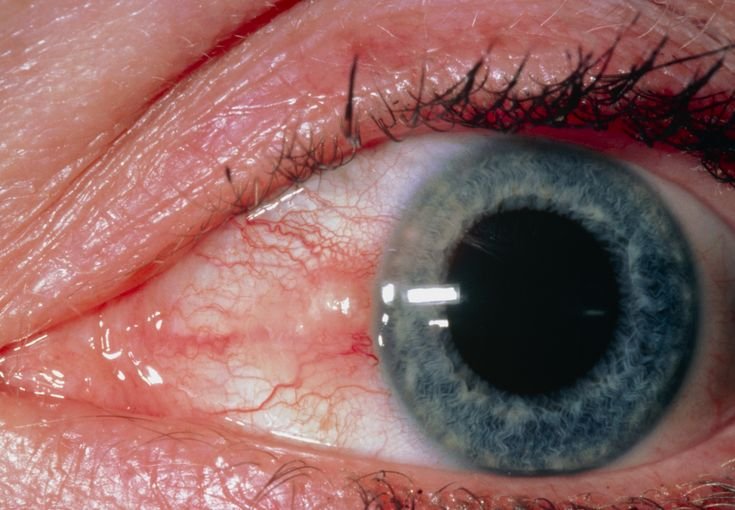
Overview
Pterygium is a non-cancerous growth of tissue on the white part of the eye (sclera) that can slowly extend onto the cornea. It is often shaped like a triangle and usually forms on the side of the eye closest to the nose. Pterygium is commonly caused by excessive exposure to sunlight, wind, dust, or dry conditions, which is why it’s often called "surfer’s eye." While it may not always cause symptoms, larger pterygia can lead to redness, irritation, dryness, blurred vision, or even affect eyesight if they grow too far onto the cornea. Treatment may include eye drops for mild cases or minor surgery if the growth becomes uncomfortable or affects vision.
How Its Works?
Pterygium develops when the conjunctiva—the thin, clear tissue covering the white part of the eye—starts to grow abnormally toward the cornea. This usually happens due to long-term exposure to sunlight (especially UV rays), dust, wind, or dry environments. Over time, this tissue thickens and spreads, forming a wedge-shaped growth. If it continues to grow, it can distort the shape of the cornea, leading to blurred or reduced vision. While small pterygia may not cause problems, larger ones can become uncomfortable and may require treatment or removal.
 Treating pterygium helps relieve eye discomfort such as redness, dryness, irritation, and blurred vision. It also prevents the growth from spreading further onto the cornea, which can affect vision. Surgical removal not only improves eye comfort and appearance but also protects long-term eye health by restoring clear vision and preventing recurrence when managed properly.
Treating pterygium helps relieve eye discomfort such as redness, dryness, irritation, and blurred vision. It also prevents the growth from spreading further onto the cornea, which can affect vision. Surgical removal not only improves eye comfort and appearance but also protects long-term eye health by restoring clear vision and preventing recurrence when managed properly.